If you’re on the internet trying to see if you can do DIY boat seat reupholstery on your own, well, most probably, you can! And in this post, we’ll tell you exactly how to.
Boat seat reupholstery requires a few readily available supplies and tools, a good quality marine-grade vinyl, and a good tutorial to follow if you’re a beginner.
In this post, we’ll not only share with you information on how to reupholster boat seats but also give you 6 fantastic tips to make your DIY process smooth and easy. Let’s begin!
Table of Contents
Materials and Tools Required for boat reupholstering
- Marine-grade vinyl
- Foam padding
- Screwdriver
- Sewing scissors
- Industrial staple gun or carpet tacker and Staples (For no-sew reupholstery method)
- A sewing machine and sewing supplies (For sewing reupholstery method)
- China marker or pencils
Step-by-Step Guide on How To Reupholster Boat Seats Without Sewing
Step 1. Assess Your Boat Seat
The first and the most crucial part of the boat seat reupholstery process is to inspect your existing boat seats.
- Case I: The damage is low to moderate:
If the damage level is not severe, you might simply get away by repairing your existing boat seats.
If there are minor tears, purchase a fabric repair kit. But if there are longer tears and bigger holes in conspicuous areas, you’ll need to plan a reupholstery. Also, know that if your boat seat upholstery is unique and difficult to replicate, a seamless repair might not be achievable.
- Case II: The damage is too severe:
Yes, too severe damage requires re-upholstery. But that doesn’t necessarily mean that you blindly get a new set of boat upholstery.
In unfortunate scenarios, the damage might be much more serious than you can notice superficially. The wood might be rotten, or the foam might be wet, damaged, and full of mold and mildew. In such situations, a simple reupholstery won’t take care of all your boat seat issues.
In fact, if the wood doesn’t look intact, you should definitely move forward with the idea of getting new boat seats or a bench instead of going through the reupholstery route.
Step 2. Get your measurements right:
Getting the measurements right is the crucial part of boat seat reupholstery. If you’ve done the reupholstery before and have the measurements carefully noted somewhere, that’s great! Else allow your old seat covers to act as a template for your new ones.
Remove the cushion and seat. In order to remove the covers, you’ll probably need to remove the staple or the thread. Lay the old removed cover flat and measure it with care.
In case of damaged foam, measure a good quality foam, not the one squished or in damaged condition, as these will probably be much smaller than the size you actually need.
Step 3. Gather supplies:
Now once you have the measurements ready, it’s time you purchase good quality supplies from a trusted store. Match the new vinyl pattern and color with the vinyl in the rest of your boat or create an interesting contrast if you’re up for it.
For foam, consider a material that is fire retardant and has a good shelf life. You might also want to consider a few extra qualities like how easy it is to cut it or how much compression you prefer when you sit.
Also, if your budget can afford it, and especially if this is your first attempt to reupholstery, make sure you purchase some extra vinyl such that you can have plenty of room for error. If you don’t, make sure you follow the ‘measure twice and cut once’ rule with the limited fabric that you have.
Take help from the list we’ve provided above in the ‘Materials and Tools required’ section to decide on things you need to purchase.
Step 4. Unroll and lay your new vinyl flat:
As your marine-grade vinyl will likely be delivered to you rolled. Unroll it and let it sit flat under the sun for about half an hour with heavy weights placed on its ends to make sure it is flat and easy to work with. You can also blow a hairdryer gently from the top to make sure the vinyl sits flat.
Step 5. Mark and cut the new vinyl upholstery:
Now, place your old vinyl cover on top of the new vinyl and trace the outline using a china marker or a greased pencil. Once you’ve drawn a clear outline, remove the old cover and cut the new vinyl as accurately as possible.
Step 6. Cut the foam if necessary:
If your boat seat foam needs replacement, use your old foam as a template to cut the new one. Remember to only take a foam in good shape as a template such that you estimate the new foam shape and size properly. You’ll probably need an electric knife for a thick foam.
Many boat owners prefer a cushier feel to their boat seats. If you like this idea, ensure that the new foam size is a bit larger than the old one.
Step 7. Wrap the vinyl around tight and secure it:
Lay your new vinyl cover flat and put the freshly cut foam padding on top of it. Now, place the wooden seat base on top of it and start wrapping the vinyl upholstery. Pull the vinyl tightly over to you and then on top of the wooden base and secure it in place using a staple gun.
To start with, just secure the cover using one or two to four staples such that you can make any amendments later if required.
Then, repeat the procedure for the opposite end and then on the final two remaining ends. Once you’re happy with the result, secure the upholstery by stapling it onto the wooden base every 2 cm apart.
Step 8. Protect your fresh upholstery:
Finally, it’s time for you to spray vinyl protectant on your boat seat cover to protect it from sun damage and other environmental factors, give your new upholstery a shiny aesthetic, and maintain its newness for long.
Tips For Reupholstering Boat Seats
1. Reupholstery is definitely an indoor job:
Needless to say, reupholstery is best done indoors. If possible, park your boat indoors to save your boat seats and foam from harsh weather.
In contrast, if you’ve your boat parked on a trailer outside or on a dock, don’t forget to cover the exposed foam nicely.
2. Selecting the cover color:
We recommend you choose a lighter-hued fabric as these do not trap as much heat as some dark colors do. If you’re often annoyed by how hot your boat seats become during sunny days, this trick will do the job for you.
3. Avoid deep groove and folds formation:
It would be best if you avoid fabric with raised patterns and deep grooves, as cleaning such vinyl seats can be a daunting task. Also, consider reinforcing the seams to prevent future tears.
4. Don’t cut corners when it comes to quality:
While it might seem reasonable to buy the cheapest available option for your boat seat reupholstery, it will probably backfire in the long run. You’ll end up changing the upholstery more often, thus spending more money.
Purchase marine-grade premium quality upholstery material. Furthermore, research on UV-resistant upholstery as these materials won’t fade upon long-term sun exposure, and you’ll be greeted with new-looking boat seats every time you board your vessel.
5. Sewing or stapling?
Commercial boat seat upholstery is often sewed. This might give an impression to many that sewing is superior to stapling when it comes to boat reupholstery. While it is true that the seams turn out better and sewing does, in fact, give good results, there are many downsides to sewing.
Let us start by mentioning that not everybody has sewing skills. And, even if you do, a sewing machine will add extra weight to your reupholstery budget, which not everyone can afford. But if you already have a sewing machine and the skill required, you should definitely go for it!
6. DIY reupholstery or professional reupholstery?
In general, it costs you around $300 to $400 if you reupholster your boat seats using the no-sewing method.
Needless to say, this cost increases when you can have your boat seats upholstered by professionals.
However, if you do not have upholstery experience, skill, or enough confidence, you’ll be better off handing over the project to professionals.
Also, remember that, with proper research, you might be able to get brand new boat seats at the price of professional reupholstery. So, keep your options open.
Summary
We hope now you’re convinced of how straightforward it is to reupholster your boat seat. If you have enough time on hand, we recommend you do this project on your own instead of spending almost twice the budget on professional upholstery or even more on new boat seats.
In case you have any more questions or suggestions, feel free to notify us below. We’d love to interact with you!

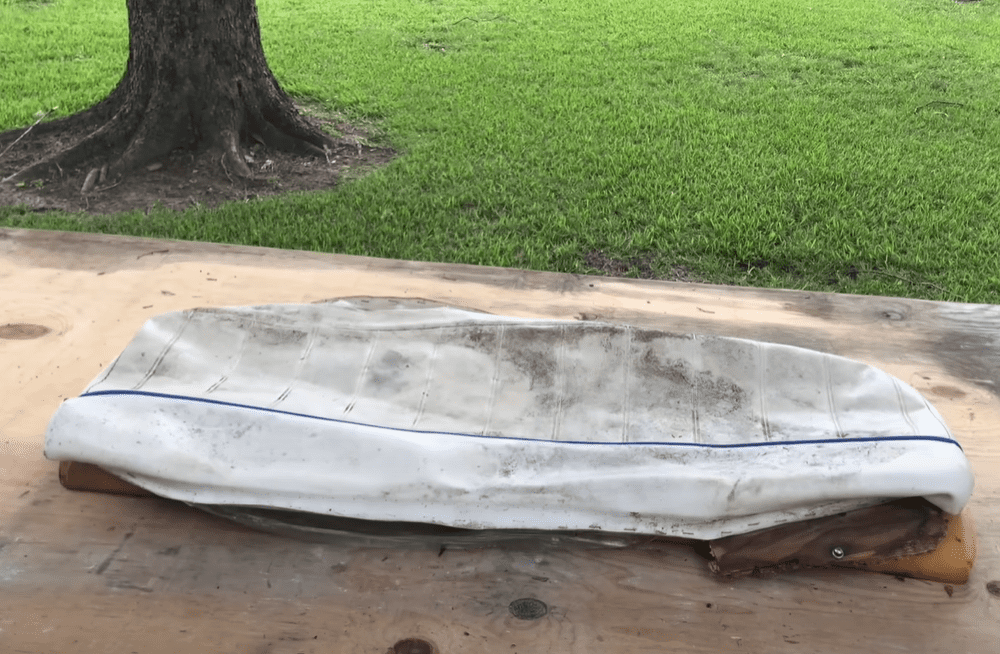
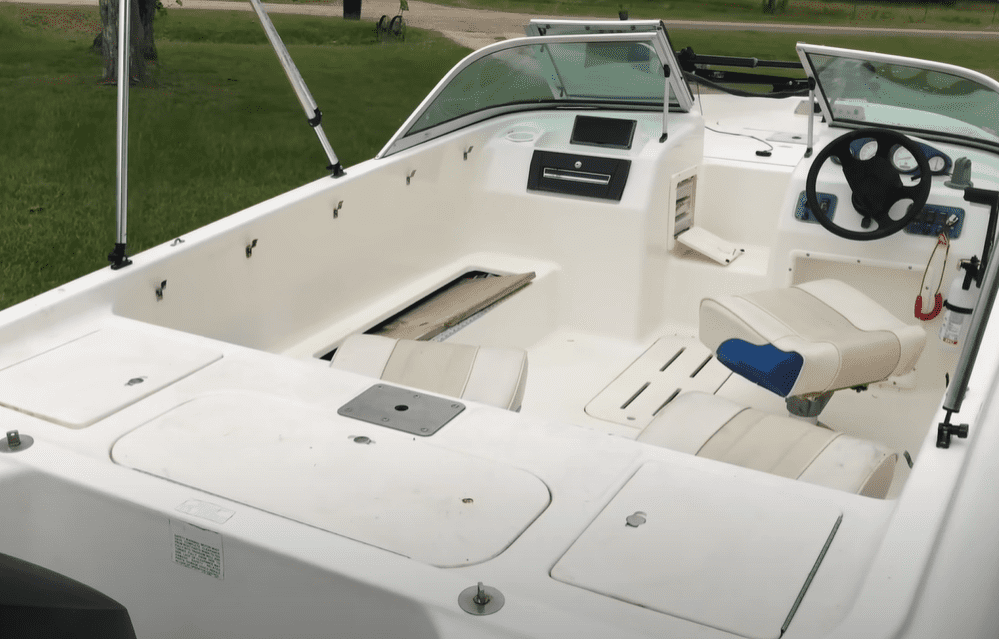
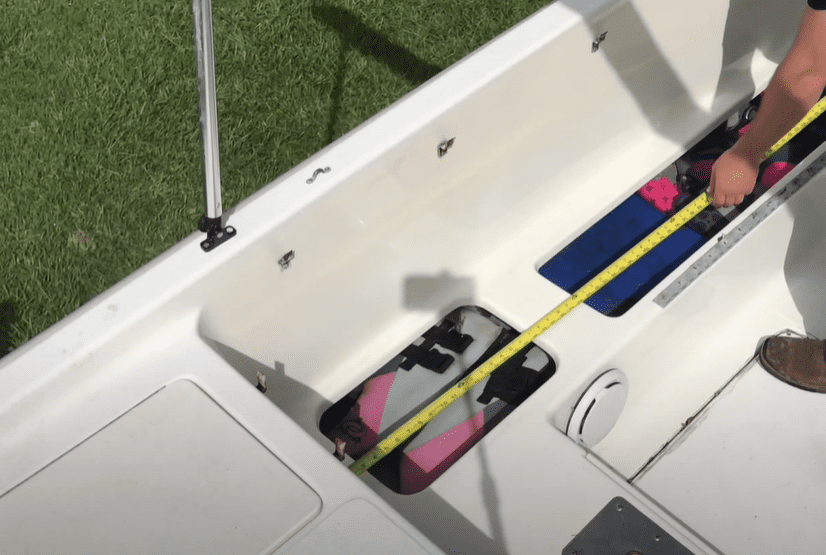

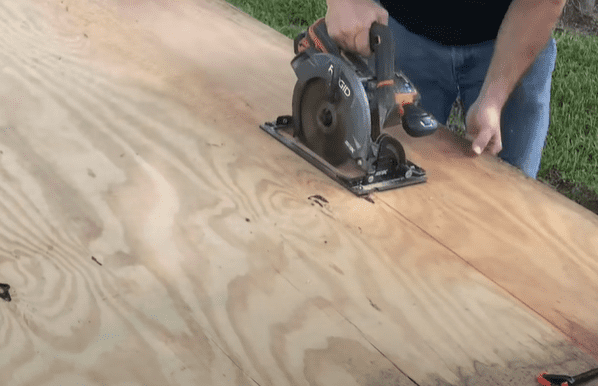
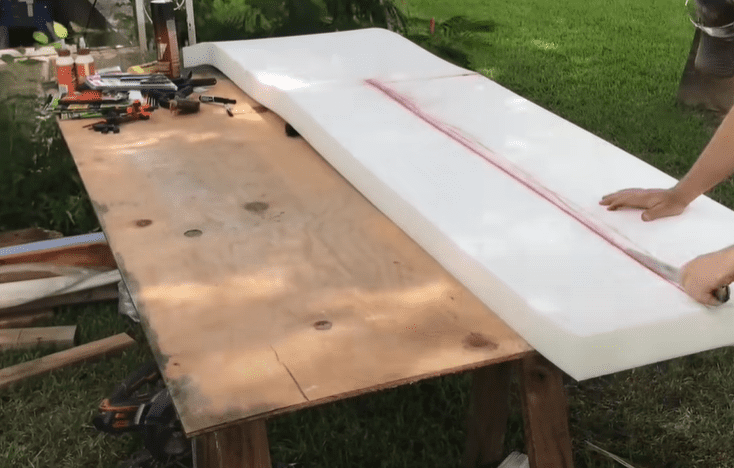
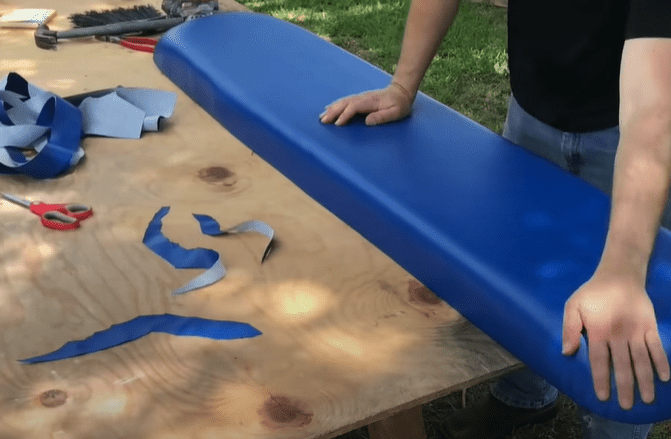
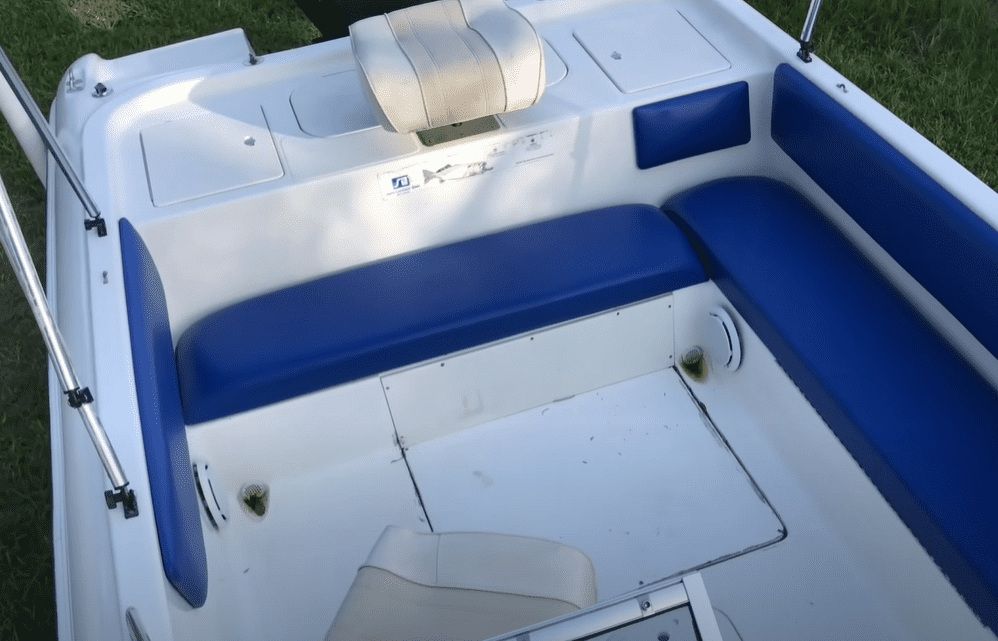

I am looking for an article that includes a proper a-to-z guide on how to reupholster boat seats, and this article the perfect place for me. Thanks so much.
Tears that are large, lengthy, or hard to reach are complicated to cure. If you believe you will be unable to cure the damage, you might as well remove the cover and get a new seat.